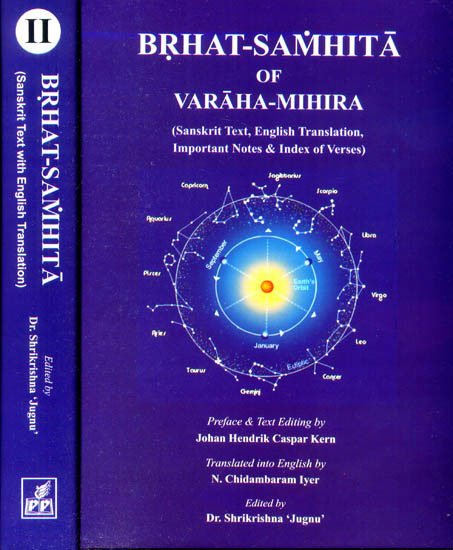Brihat Samhita
by N. Chidambaram Iyer | 1884 | 135,584 words | ISBN-13: 9788171104215
This page describes the features of the horse (ashva-lakshana) which is the sixty-sixth Chapter of the English translation of the Brihat-samhita. This work, written by Varahamihira in the 6th century, is classified as jyotisha literature, also known as Indian astronomy. It contains however, also content regarding astrology, palmistry, agriculture, gardening, perfumes, medicines and various other encyclopedic topics.
Chapter 66 - On the features of the Horse (aśva-lakṣaṇa)
[Sanskrit text for this chapter is available]
1. The horse (aśva) whose neck and eyes are long, breast and mane broad; lips, tongue and the corners of mouth red; skin, hair and tail thin; hoof, gait and face beautiful; ears, lips and tails short; shanks, knees and thighs round; teeth even and white and limbs symmetrical, fine, smooth and clean, will cause the death of the enemies of the king.
2. The horse (aśva) which has a ringlet under the eyes, in the chin, cheek, heart, neck, the part between the nostrils, temples, the buttocks, part below the nostrils, knees, testicles, navel, hump on the back, anus, right belly and feet, will bring on evil.
3. The horse (aśva) which has ringlets, in the upper-lip, neck, ears, back, loins, eyes, lips, thighs, front legs, belly, sides and forehead, will bring on prosperity.
4. Of these benefic curls and ringlets, there shall be only one in the upper lip, one named Dhruva in the forehead and mane and two in the Randhra (?) and Uparandhra (?) parts of its head and in the breast.
5. A colt has six white teeth. If the teeth be of brown colour, the animal is 2 years old; if the central and corner teeth in both lines have fallen and sprouted again, the animal is from 3 to 5 years old, according as the number of such teeth is 3, 4 or 5; if the lines known as Kālikā, Pīta (a yellow line), Śukta (black line), Kācā (white line), Makṣīka (of the colour of the bee) or Śaṅkha (of the colour of the conch shell) appear in the teeth, the age of the animal will respectively be from 6 to 8, 9 to 11, 12 to 14, 15 to 17, 18 to 20 or 21 to 23. If depressions appear in the teeth or if the teeth have begun to shake, or if they have fallen, the age varies from 24 to 60.
